I am really carious to know when can we add up and when we cannot?
When two two-terminal elements are in series, the voltage across the combination is equal to the sum of the voltages of the branches.
When two two-terminal elements are in parallel, the total current through the combination is equal to the sum of the currents of the two branches.
But the problem is C=0 since the input of the op-amp is zero volts on both sides, ... does that mean V0 is zero volts also?
We say that negative feedback drives node C to zero, but what we really mean is just that it drives it really close to zero. Since C is close to zero but not exactly zero, and the gain of the op-amp is really large (like 100,000 or 1,000,000) then V0 isn't exactly zero.
Having calculated the output voltage as -12 V, and assuming the gain is 100,000 (just a typical number, check the datasheet of your op-amp for an appropriate value for your device), you can see that node C is really at about 0.12 mV. You can see that this value doesn't appreciably change the analysis of the input circuit (and in fact this value could be totally inaccurate due to other op-amp non-idealities like input offset voltage).
If you really want to know how big this effect is, the easiest way is to simulate your circuit with a non-ideal op-amp model in a SPICE-like simulator.


